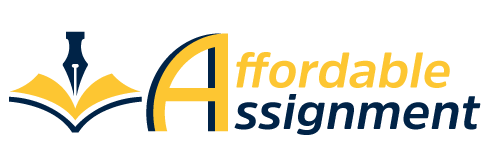Assignment writing is a crucial skill for students at all levels of education. It’s not just about completing tasks; it’s about effectively communicating ideas, demonstrating comprehension, and showcasing critical thinking. Excelling in assignment writing not only improves academic performance but also enhances essential skills for professional life.
Importance of Effective Assignment Writing
Effective assignment writing is pivotal in academia, fostering critical thinking, clarity, and communication skills. Beyond mere task completion, it cultivates the art of articulating ideas coherently and persuasively. It’s the cornerstone of academic success, honing one’s ability to analyze, synthesize, and present information. This skill transcends the classroom, impacting future professional endeavors, where concise, well-structured communication is paramount. It not only demonstrates comprehension but also showcases a student’s intellectual depth. Effective assignment writing is the conduit through which knowledge is imparted and ideas are conveyed, making it an indispensable skill for personal and professional growth.
10 Ideas for Enhancing Your Assignment Writing
Understanding the Assignment Requirements
Understanding the assignment requirements is the cornerstone of successful academic work. It involves delving deep into the instructions provided by the instructor, and comprehending the task’s scope, objectives, and specific guidelines. This initial step sets the foundation for the entire assignment, guiding subsequent research and structuring. Clarity on what’s expected ensures that efforts are focused on meeting the criteria, allowing for a targeted and purposeful approach. Failure to grasp these requirements can lead to misdirected efforts and a lack of alignment with the assignment’s core objectives, underscoring the significance of this preliminary stage in the writing process.
Research and Information Gathering
Research and information gathering form the bedrock of proficient assignment writing. It involves a meticulous exploration of diverse sources such as academic journals, credible websites, books, and other scholarly materials. This process is more than mere data collection; it’s about curating relevant and authoritative information to substantiate arguments and provide depth to the assignment. Effective research not only enriches the content but also showcases a well-rounded understanding of the subject matter. It empowers writers to present well-informed perspectives, lending credibility and substance to their work, thereby elevating the overall quality of the assignment
Creating a Structured Outline
Crafting a structured outline is a pivotal stage in the assignment writing journey. It serves as a roadmap, organizing thoughts, ideas, and information into a coherent framework. This foundational step delineates the assignment’s flow, ensuring a logical progression of concepts and arguments. An outline acts as a guide, keeping the writer focused on the main objectives while preventing the risk of digression or disorganization. It aids in visualizing the assignment’s structure, allowing for adjustments and refinements before delving into the actual writing process. Ultimately, a well-structured outline lays the groundwork for a cohesive and compelling assignment.
Crafting a Compelling Introduction
Developing Clear and Concise Body Paragraphs
Perfecting transitions and flow within an assignment is akin to building bridges between ideas, ensuring a seamless journey for the reader. These transitions serve as connectors, linking paragraphs and sections cohesively. A smooth flow facilitates the reader’s understanding by guiding them effortlessly from one point to the next, maintaining the logical progression of thoughts. Effective transitions not only enhance readability but also contribute to the assignment’s overall coherence and structure. They create a rhythm, allowing ideas to unfold naturally and enabling the reader to traverse the content with ease, ultimately enriching the overall quality of the assignment.
Effective Conclusion Writing
Effective conclusion writing is more than a mere summary; it’s a culmination that echoes the assignment’s main points while offering a sense of closure. It reiterates the significance of the arguments presented, reinforcing their relevance to the assignment’s overarching theme. A well-crafted conclusion goes beyond repetition, delving into the implications of the discussed ideas or suggesting avenues for further exploration. It leaves a lasting impression on the reader, ensuring that the assignment’s purpose is solidified and its impact resonates beyond the final words, concluding the narrative with finesse and leaving a thought-provoking imprint.
Proofreading and Editing Techniques
Utilizing Feedback and Revisions
Utilizing feedback and revisions is a pivotal step in the evolution of an assignment. Embracing constructive criticism and feedback from peers, instructors, or mentors offers invaluable insights into areas that require improvement. It’s a collaborative process that allows for refinement, ensuring that the assignment reaches its full potential. Revisions based on feedback showcase a commitment to growth and excellence, polishing the content, structure, and clarity. Embracing this iterative approach not only enhances the quality of the assignment but also fosters a continuous learning process, refining writing skills and nurturing a receptive attitude toward constructive input.
Time Management and Deadlines
Effective time management and adhering to deadlines are integral components of successful assignment completion. Managing time efficiently involves breaking down tasks, setting realistic milestones, and allocating sufficient time to each phase of the writing process. Adherence to deadlines ensures that assignments are submitted punctually, demonstrating reliability and commitment. Moreover, it allows for adequate time for revisions and refinement, contributing to the overall quality of the work. Proactive time management not only reduces stress but also cultivates a disciplined approach to academic or professional responsibilities, fostering a habit of meeting commitments in a timely manner.
Conclusion
In conclusion, mastering the art of assignment writing is far more than a mere academic obligation; it’s a skill set that transcends classrooms and resonates in professional endeavors. It demands meticulous attention to detail, clarity in expression, and a structured approach. Effective assignment writing nurtures critical thinking, communication prowess, and organizational skills, contributing significantly to academic success and future career prospects. By embracing the strategies discussed—understanding requirements, thorough research, structured writing, and effective revision—students can hone their craft, crafting assignments that not only meet criteria but also showcase their depth of understanding and analytical prowess. Ultimately, assignment writing is a journey of growth and learning, a pathway toward honing invaluable skills crucial for success in academia and beyond.
Faqs
-
How do I handle writer’s block when working on assignments?
Writer’s block can be overcome by taking short breaks, brainstorming ideas, or starting with a different section of the assignment. Also, creating an outline or discussing the topic with someone else often helps ignite inspiration.
Is it okay to use online resources for assignment research?
Yes, utilizing reputable online resources such as academic databases, scholarly articles, and credible websites can enrich your research. Just ensure that the sources are reliable and properly cited.
What are some effective proofreading techniques?
Effective proofreading involves reading the assignment aloud, taking breaks between revisions, using spell-check tools, and seeking feedback from peers or mentors to catch errors and improve clarity.
How can I improve the structure of my assignments?
Structuring your assignments involves creating a clear introduction, organizing ideas logically with supporting evidence in body paragraphs, and concluding by summarizing key points.
What role does critical thinking play in assignment writing?
Critical thinking is crucial; it helps in analyzing information, developing arguments, and presenting ideas logically and persuasively in assignments.





